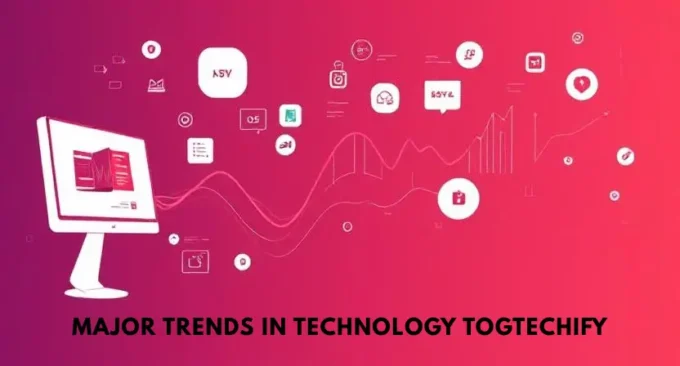Welcome to the fascinating world of quantum computing! Have you ever wondered what quantum computers are and how they work? If so, you’re in the right place. Quantum computing is a field that has skyrocketed in popularity over recent years, with promises of solving currently unsolvable problems and revolutionizing industries from healthcare to finance. However, despite all the hype, many people still find it difficult to understand this complex topic.
That’s why we’ve created this beginner’s guide to simplify everything for you. We’ll break down the basics of quantum mechanics and explain how quantum computers differ from classical ones. So, let’s dive in and explore one of the most exciting technological frontiers out there!
What is Quantum Computing?
Quantum computing is a new form of computing that uses quantum bits, or qubits. Unlike classical bits, which can only take on one of two values (zero or one), qubits can hold several different values at the same time. This allows quantum computers to perform certain calculations much faster than traditional computers.
Currently, quantum computing is still in its early stages and is not widely used yet. However, researchers believe that it could soon be used for many tasks that are currently difficult or impossible for classical computers to complete.
Some examples of things that quantum computing could be used for include cracking codes, solving complex problems in physics, and understanding the workings of molecular machines.
The Different Types of Quantum Computers
Quantum computers take advantage of the principles of quantum mechanics to perform calculations. This difference in how classical (traditional) computers work and quantum computers can allow quantum computers to solve certain problems much faster than traditional computers.
There are many different types of quantum computing, but they all share some common features. All quantum computers use information that exists in multiple states at the same time. Classical (traditional) computer bits represent single values, likeon or off.
Faster Problem Solving and Data Analysis
However, qubits can represent a combination of two values, like red and green. This allows quantum computers to do things that are impossible with classical computers.
Some examples of how quantum computing can be used are solving certain problems much faster than traditional computers and finding patterns in large data sets. While there is still a lot to learn about quantum computing, it is an exciting technology that is slowly being adopted by businesses and governments around the world.
How Does Quantum Computing Work?
Quantum computers are special computers that use quantum bits, or qubits. These are tiny particles that can be in multiple states at the same time. This makes quantum computing very powerful because it can solve problems much faster than traditional computers.
To use quantum computing, you need to first set up a quantum computer. There are different ways to do this, but the most common is to put qubits inside a vacuum chamber. Then you need to initialize the qubits so they start working correctly. This involves sending them a specific set of instructions.
Faster Problem Solving with Superposition, but with Limitations
Once your quantum computer is set up, you can start solving problems. To do this, you need to find a way to create a superposition of two different qubits. This means that they are both active at the same time. Once you have found a way to do this, you can start solving problems using the superposition state of the qubits.
The main advantage of using quantum computing over regular computers is that it is faster and more efficient at solving problems. However, there are some limitations too. For example, current quantum computers cannot solve problems that require lots of data storage or complex calculations.
What Are the Potential Benefits of Quantum Computing?
Quantum computing could revolutionize the way we process information, making it possible to solve problems much faster than conventional computers. Here are four potential benefits of quantum computing:
1. Quantum computers could improve security and protect data from theft or unauthorized access. Because quantum-based algorithms are difficult to hack, they would be more effective at protecting sensitive data than traditional computer systems.
2. Quantum computers could help researchers study complex phenomena and processes that are too difficult or time-consuming to model using classical methods. By exploring new methodologies and exploring the boundaries of classical physics, quantum computers could make significant breakthroughs in fields such as chemistry and biology.
3. Quantum computers could speed up the development of new products and services by allowing companies to explore different solutions to complex problems faster. This would allow them to create products or services that are better suited for a changing market landscape, and reduce the time needed to develop new products.
4. Finally, quantum computing could also enable scientists to solve previously unsolvable problems in a much shorter timeframe than with classical methods. As technology continues to evolve, there is a growing need for tools that can solve increasingly complex problems more quickly – something quantum computing may be able to provide.”
How to Start Using Quantum Computing?
Quantum computing is a new type of computing that uses quantum bits, or qubits. There are many different ways to use quantum computing, but one common way is to use it to solve problems that would be too difficult for traditional computers. In this article, we will explain how to start using quantum computing and help you understand what it can do.
To start using quantum computing, you need to have a computer that is capable of doing quantum calculations. You can find out if your computer is capable of doing quantum calculations by looking online or contacting your computer manufacturer.
Once you have determined that your computer can do quantum calculations, the next step is to set up the software necessary for quantum computing.
Exploring Quantum Computing with QScholar and IBM Quorum v2
There are several different software programs available that allow you to use quantum computing. The most popular program is called QScholar, and it can be downloaded from the internet.
QScholar allows you to input mathematical problems and see whether or not they can be solved with quantum computers. If they can be solved with a quantum computer, QScholar will show you the solution in an instant.
Another program that allows you to use quantum computing is IBM’s Quorum v2 platform. Quorum v2 allows users to simulate the behavior of particles on a chip by running thousands of simulators at the same time.
This program is used by scientists and engineers who want to understand how specific algorithms work on a physical level before implementing them into chips or systems.
Conclusion
If you are interested in learning more about quantum computing, this beginner’s guide is for you. Quantum computing has the potential to revolutionize many industries, and understanding how it works can help you get a better grasp of its capabilities.

















Leave a comment